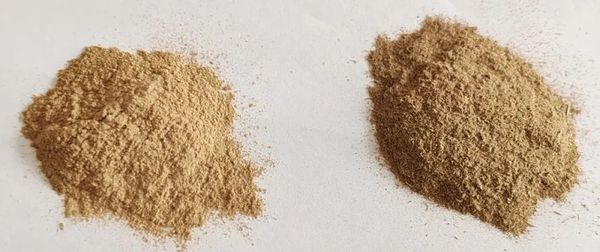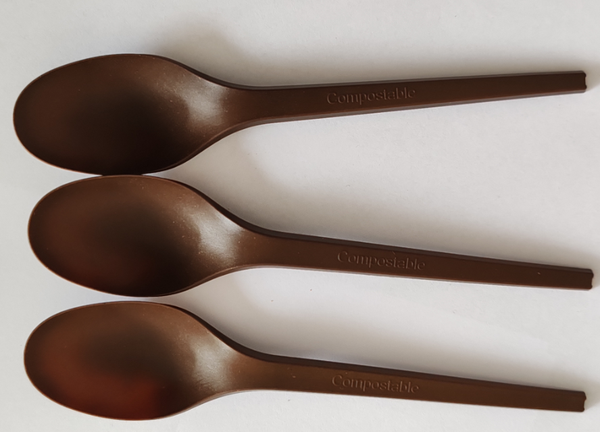900 million tons of potential, the challenge of large-scale application of straw powder solved!
Yushi Biology processes corn stalk micro-powder (addition amount 30%, adjustable) with polylactic acid (PLA, addition amount 70%) into fully biodegradable disposable tableware.
The Bioplastics Research Institute reported that as a major agricultural country, our annual collectible crop straw production is about 900 million tons, accounting for 1/4 of the global total straw production. For a long time, the handling of straw has been a challenge to the sustainable development of agriculture: open-air burning leads to air pollution, returning straw directly to the fields is inefficient, and random stacking occupies land and pollutes water sources. How to convert massive amounts of straw into high-value resources has become a key issue for achieving the "dual carbon" goals and the green transformation of agriculture.
In recent years, the application of straw powder in the field of biodegradable plastics has opened up an innovative path. Its core lies in combining the natural components in straw, such as cellulose and lignin, with bio-based polymer materials (such as polylactic acid PLA, polyhydroxyalkanoates PHA) to form environmentally friendly composite materials. This technology not only provides an outlet for the utilization of straw resources but also promotes the upgrading of the plastic industry towards a low-carbon, circular direction.
I. Application of Straw Powder
filler. blending straw powder with biobased polymer materials (such as polylactic acid PLA, polyhydroxyalkanoates PHA, etc.) can reduce the cost of plastics by 30%-50% and improve the rigidity and heat resistance of the material, suitable for tableware, packaging, and other fields. the cellulose and lignin in straw powder can enhance the mechanical properties of plastics (such as tensile strength, modulus).
Enhanced materials. Improve the compatibility between straw powder and polymers through surface modification (such as alkali treatment, coupling agent treatment) to enhance the interfacial bonding of composite materials. Suitable for preparing packaging materials, tableware, agricultural mulch films, etc.
Bio-based raw materials. Straw powder can be converted into monomers such as glucose and lactic acid through processes like hydrolysis and fermentation, and then further synthesized into biodegradable plastics. For example, the glucose obtained from straw hydrolysis can be used to produce polylactic acid (PLA).
II. The Triple Advantages of Straw Powder
Environmental friendliness. Reducing the use of oil-based plastics, lowering the carbon footprint. Straw powder is completely biodegradable, ultimately converting into CO₂ and water, reducing white pollution.
resource recycling. agricultural straw (such as rice straw, wheat straw) is widely available and low-cost, alleviating environmental issues caused by straw burning or disposal.
Performance optimization. The addition of straw powder improves the breathability and degradation rate of plastics, for example, the degradation cycle of PLA/straw mulch film can be shortened to 6 months.
III. Challenges of Large-Scale Application of Straw Powder
Compatibility issues. The polarity and hydrophilicity of straw powder result in weak interfacial binding with nonpolar polymers (such as PLA), which may lead to a decrease in the mechanical properties of the material.
Degradation rate control. The addition of straw powder may accelerate plastic degradation, but it is necessary to balance the degradation speed with practical usage requirements (such as service life).
Processing technology limitations. The high moisture content and complex fiber structure of straw powder require pretreatment (drying, crushing, modification) to adapt to plastic processing techniques.
Scaling processing pressure. Straw has a strong dispersion, requiring the establishment of a regional collection, storage, and transportation system, along with standardized preprocessing facilities (such as drying, crushing).
Four, the solution for straw powder
Taian Yushi Biotechnology Co., Ltd. innovates production processes, overcoming the challenges in straw processing through unique conditioning pretreatment processes, adding bio-based conditioners, and other technological treatments. This increases the rigidity and hardness of the straw while reducing its flexibility and toughness, successfully achieving the micronization of straw.
After applying this process, the straw can be processed immediately after it is lifted from the ground, suitable for both dry and wet conditions, improving quality, saving space and time; abandoned biomass such as corn stalks, wheat stalks, rice stalks, cotton stalks, soybean stalks, pruned branches of trees, potato dregs, and sugarcane bagasse are all applicable to this process; the product particle size can be controlled between 10-1000 mesh, with a moisture content of less than 10%, and when it is reduced to below 3%, it can be directly mixed with plastic, showing good compatibility.

△ Yushi produced 120 mesh and 300 mesh straw micro powder
IV. Practical Application Cases
Agricultural mulch film. The mulch film made by blending straw powder with PLA can naturally degrade after the crop is harvested, avoiding residual pollution.
Packaging materials. Straw powder reinforced biodegradable plastic bags, food containers, knives, forks, and spoons, have been piloted and promoted in some regions.
3D printing materials. Filament made from a composite of straw powder and PLA, combining environmental friendliness with printing performance.

△ Yushi Bio-produced corn stalk powder + PLA cutlery. Yushi Bio processes corn stalk micro-powder (30% addition, adjustable) and polylactic acid (PLA, 70% addition) into fully biodegradable disposable tableware that is transparent in appearance, with moderate hardness, and is both economical and environmentally friendly. Under new environmental requirements, corn stalk micro-powder is a cost-effective and ideal plastic filler material that significantly reduces costs and improves efficiency.
V. Future Trends
Technological innovation: Develop efficient straw pretreatment technology (such as nanocellulose extraction) to enhance material performance.
Policy support: As the global plastic ban advances, the market demand for straw-based biodegradable plastics will further expand.
interdisciplinary crossover: combining fields such as materials science and bioengineering to explore high-value utilization pathways for straw
Through technological breakthroughs and industrial collaboration, straw powder is expected to become an important raw material in the biodegradable plastics sector, promoting the development of a circular economy.
【Copyright and Disclaimer】The above information is collected and organized by PlastMatch. The copyright belongs to the original author. This article is reprinted for the purpose of providing more information, and it does not imply that PlastMatch endorses the views expressed in the article or guarantees its accuracy. If there are any errors in the source attribution or if your legitimate rights have been infringed, please contact us, and we will promptly correct or remove the content. If other media, websites, or individuals use the aforementioned content, they must clearly indicate the original source and origin of the work and assume legal responsibility on their own.
Most Popular
-

List Released! Mexico Announces 50% Tariff On 1,371 China Product Categories
-

Nissan Cuts Production of New Leaf EV in Half Due to Battery Shortage
-

New Breakthrough in Domestic Adiponitrile! Observing the Rise of China's Nylon Industry Chain from Tianchen Qixiang's Production
-

Dow, Wanhua, Huntsman Intensively Raise Prices! Who Controls the Global MDI Prices?
-

Mexico officially imposes tariffs on 1,400 chinese products, with rates up to 50%






